In an increasingly digitalized world, NFTs are the latest cryptocurrencies to be all the rage these days. Highlighted by several record sales at the beginning of the year, this new form of technology, which means “non-fungible token”, is now in the spotlight. Behind this term hides a feature that can bring thousands or even millions of dollars to some artists, and this, for some time now.
As the news goes fast, it didn’t take long to sharpen the curiosity of the general public. NFTs soon became popular. If the latter have applications in the art world, the idea is that they apply as well in other varied fields, such as video games, or sports.
What are NFTs?
The acronym NFT stands for “Non Fungible Token“. As a reminder, a token is a digital asset issued by a blockchain. In the same category are bitcoins, or XRP.
Created on a smart contract platform, Ethereum, NFTs differ from other cryptocurrencies. Indeed, non-fungible means that each unit (token) has a unique character, and cannot be reproduced. Unlike bitcoins which are fungible, these particular currency units are equal and identical. They can be likened to real money.
Going back to NFTs, this so-called “non-fungible” property can be used for many things. But what literally sparks the craze behind these tokens is digital art and collectibles.
In other words, users realize that a unique digital object can have significant monetary value, just like a work of art, due to its uniqueness. That is why there is a space that has recently developed in the field of digital art, video games and sports.

How NFTs work
NfTs depend mostly on the platform where they are created. In this case, we will focus on Ethereum, which brings together the largest number of these crypto-arts.
As we speak here of “property“, no authority, no one can cancel your property to an NFT or recreate one exactly the same. In addition, they are also “without authorization”, that is, anyone can create, buy or sell them without any authorization. However, the uniqueness report remains, even if anyone can consult it.
Alternatively, an NFT can be compared to a one-of-a-kind trading card, arranged in an open display case and that everyone can admire. The only specificity is that it belongs to a single person at any given time. In practice, he can represent himself through a digital work of art, an image. In itself, it is the very existence as a digital object in the blockchain that makes an NFT unique.
How do I buy or exchange an NFT?
NFTs can be purchased and traded like any other Ethereum-based cryptocurrency. But the transactions of these tokens take place on a different platform, or rather on a browser extension: Metamask. This allows you to interact with various components of Ethereum, such as application exchanges. In addition, Metamask can be considered a digital wallet. It brings together all the tokens created on Ethereum, whether they are fungible or not.
Once the extension is installed, it is possible to obtain NFTs directly on the platform by paying a fee. The purchase can be made via a debit card, such as Apple Pay or other payment methods. It should be noted that these are really money market funds, and that vigilance is required. Indeed, once the funds are acquired, it is necessary to ensure that the Metamask password, as well as the private key of the wallet, are stored in a secure place on the computer.
Finally, by visiting a website that can sell NFTs or exchange them, simply log into the Metamask wallet and make the transactions.
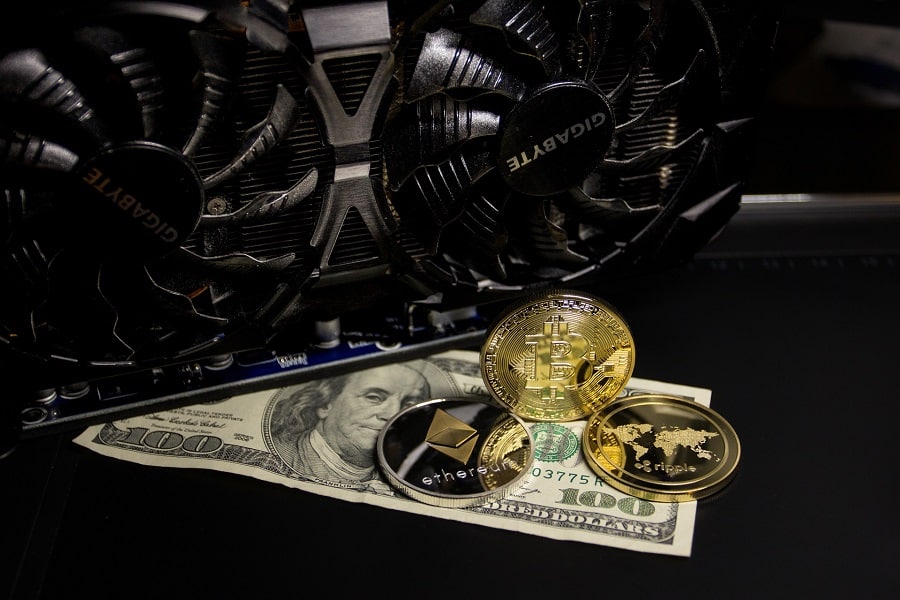
Platforms where to buy or exchange NFTs
Here are some of the NFT buying and trading platforms where you can make your transactions with ease:
OpenSea
OpenSea is by far the largest platform with its catalog of NFTs of all types. The platform has ERC721 and ERC1155 assets and also exclusive digital assets (Axies, CryptoKitties, etc.). With OpenSea, you can sell at a fixed price, decreasing price or via an auction.
Crypto.com
Not far from OpenSea’s reputation, Crypto.com is also a great platform for buying and selling NFT. It features a wide range of NFTs related to art, music, sports, TV debates, etc.
Foundation
With the Foundation platform, each NFT creator earns 10% for each NFT resale by a collector. Specifically, the gain is obtained when the token is resold at a higher price.
AtomicMarket
This platform operates based on the notion of shared liquidity. Thus, you can sell your non-fungible tokens there while offering them on other Marketplaces. All NFTs offered for sale are verified and the platform blacklists suspicious collections.
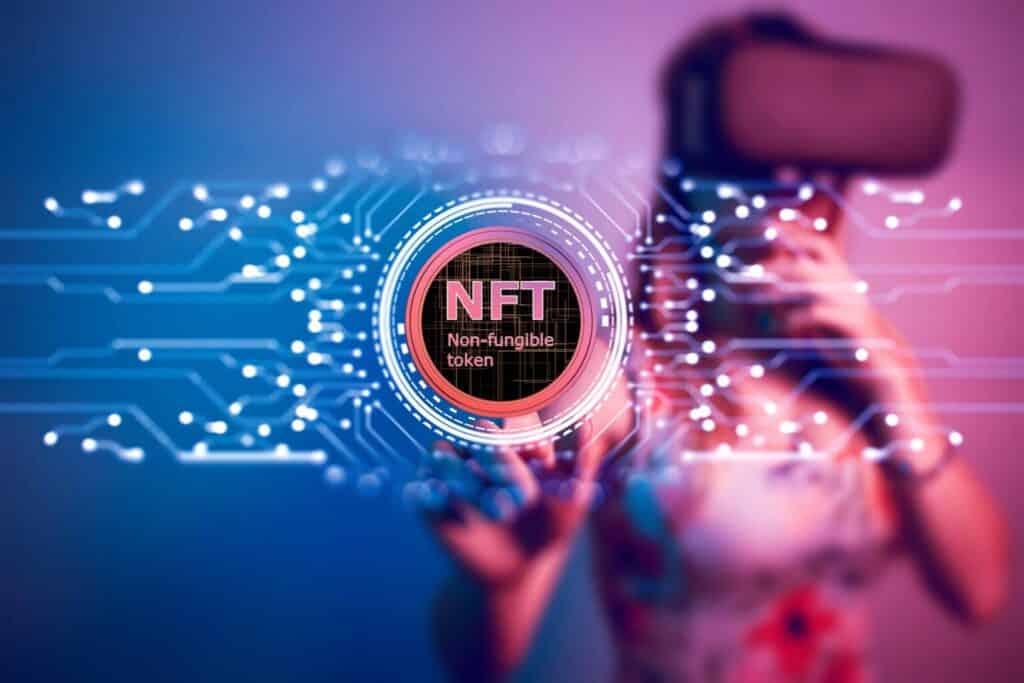
Enjin Marketplace
Enjin Marketplace offers in particular the possibility of exchanging blockchain assets. It is indeed the official Marketplace for all NFT based on Enjin. An Enjin wallet is used to buy and sell game and collectibles with ease.
Rarible
This community platform assigns RARI tokens to active users. It favours artistic assets. Rarible allows you to create NFTs. It even offers the possibility to show an overview of the creation to all visitors to the Marketplace.
SuperRare
As the name suggests, SuperRare enables the purchase and sale of unique and single-print digital artworks. The platform has digital objects secured by cryptography. It is a perfect marketplace for artists. Transactions are carried out entirely using Ethereum.
BakerySwap
BakerySwap holds both an automated marketplace and a decentralized exchange on Binance Smart Chain. BAKE is the native token of the platform. Being a multifunctional hub, BakerySwap offers an NFT marketplace in addition to a wide range of decentralized finance services.
Myth Market
Myth Market encompasses various online marketplaces where a multitude of digital trading cards are traded. GPK. Market (Garbage Pail Kids), GoPepe.Market (GoPepe), Heroes.Market (Blockchain Heroes) are among the most well-known brands on the platform.
Known Origin
Known Origin also offers NFTs with a unique and authentic character. It is the Ethereum blockchain that certifies the security of the platform. Within Known Origin, each creator can submit their works in jpg or Gif format.
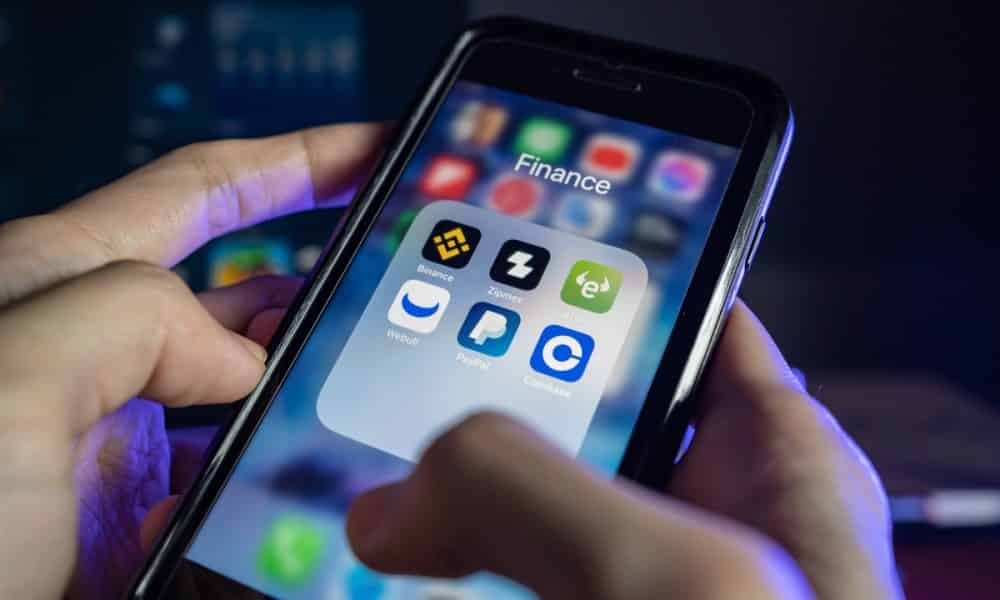
Coinbase
Coinbase presents itself as a one-stop shop. It includes several services namely digital asset management, buying and selling NFT. This platform offers great ease of use.
How do I create an NFT?
No need to have special skills to create an NFT. In fact, this operation is rather simple. Just follow a detailed guide to ensure the security and value of the token.
To begin with, it is necessary to determine the type of NFT to be created such as a work of art, games, music, a meme or virtual objects. In addition, it is possible to design an NFT from an article from the physical world. Non-fungible tokens can also take the form of a media file.
The creation of an NFT implies the desire to sell it later. It is therefore necessary to have a crypto wallet. This wallet is used both to store Ethereum and to pay the minting fee. But before taking this step, you must choose the trading platform. After its creation, it is possible to connect your wallet.
Below are the steps to follow in the process of creating non-interchangeable tokens:
Step n°1: Choose on which platform to sell the NFT
The first step is to choose the platform to sell nfTs. Each platform has its own particularities. This has been mentioned earlier. It is then necessary to choose the one that best suits the needs.
Want to create a unique and authentic token? In this case, the choice is OpenSea, SuperRare or Known Origin. Of course, since Ethereum is the main cryptocurrency used in NFT exchanges, the use of other cryptos would entail other fees. It is therefore time to favor a platform that uses Ethereum so as not to have to pay more.
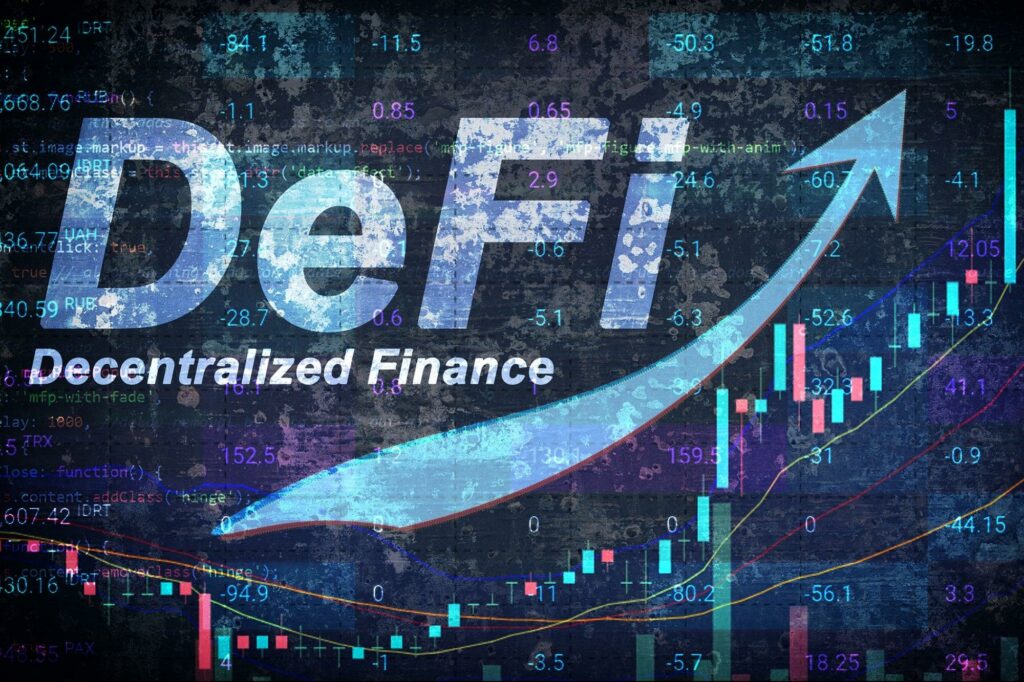
Step 2 Set up a wallet
Metamask is one of the accepted extensions of NFT exchange applications. For web versions, we can mention Firefox or Chrome, and for mobile applications, iOS and Android. Some platforms, like Coinbase, develop their own wallets. Only, these wallets are not always based on Ethereum.
After setting up the wallet, all that remains is to copy the code to a secure place on the device. For this purpose, a physical safe can also be used. However, one must be very careful with the code, because even the platform cannot access this account in case of loss of the access code. A newly created wallet normally contains nothing.
Step n°3: Connect the wallet thus created
To connect the portfolio to the trading platform, click on the “Create” button. A list of compatible wallets then appears, from which to choose.
Once logged in, the wallet can be used to buy or sell NFTs. However, it is necessary to take into account the number of works to be downloaded. Indeed, the greater the quantity of coins for sale, the more its value increases. On the other hand, the reproduction of a work in several original editions automatically decreases its value.
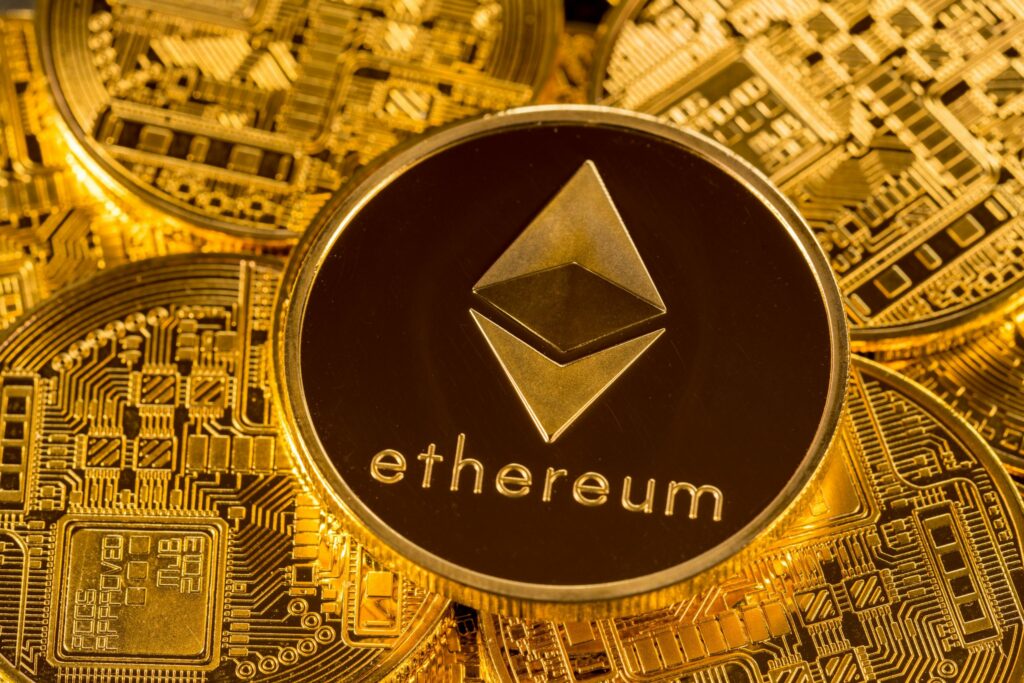
What is the ideal cryptocurrency to buy NFT?
Ethereum is the ideal crypto to trade on the NFT market. Nevertheless, other cryptocurrencies can be used to buy one, depending on the platform chosen. The payment is usually made in Ethereum, but also with the other cryptocurrencies where the token is listed.
Find in the guide below the steps to follow to buy an NFT:
Buy Ethereum on the cryptocurrency market
There are dozens of options to choose from, but it’s best to start with an Ethereum-compatible wallet. Currently, OpenSea is one of the most important platforms that mainly use Ethereum. This platform also supports more than 150 other cryptos to buy an NFT. Other NFT marketplaces that offer a wide variety of artwork and collectibles include Binance NFT.
Then transfer the resulting balance to the cryptocurrency wallet
Some exchanges like Coinbase have built-in wallet features that are offered by opening an account. But other options include dedicated wallets like MetaMask.
Once the crypto balance needed to buy NFT has been obtained, one must connect the wallet to the platform. Once logged in, simply browse the NFT marketplace collection and make a purchase.
Do you own the copyright of an NFT you bought?

The growing success of NFTs has raised questions about the role copyright plays in their protection. Despite the fact that it is a little-known type of art, NFTs are subject to copyright in the same way as any other traditional work of art.
If an artist creates a work of art, he automatically acquires a copyright in it. It may also reproduce an original work, prepare derivative works and distribute copies of the work.
But how does copyright law apply to NFTs created from a copyrighted work? It should be noted that a third party may own an acquired reprint of a copyrighted work. In fact, this creation is considered non-counterfeit only if it is subject to the lawful use clause or if it has been licensed by the copyright owner.
Therefore, the NFT may infringe the original work unless it has been modified. Such an amendment has the effect of giving it a new expression and meaning or a new message that would bring it within the scope of the doctrine of fair use.
It should be remembered that NFTs are subject to copyright and other intellectual property laws. A digital work of art remains a work of art, as it has always been. Only copyright holders and their licensees can create NFEs from a copyrighted work.
What is an art NFT?
Just like cryptocurrencies, NFT is also a purely digital asset. He then escapes any physical form. Its nature gives it a unique property. In this part, we will devote a few lines for the NFT art.
NFT art, an opportunity for artists
NFT art is about works of art. In the past, artists had to content themselves with publishing and republishing their works without really enjoying them exclusively. Today, thanks to the NFT market, digital works of art will be able to conquer the world, while benefiting their creator. The works can be viewed at any time and in any place.
NFT art means an opportunity for artists to sell their works legally. This type of token is part of the cryptocurrency service, the Blockchain. It is said that he is “hit”.
Blockchain technology follows the same principles as cryptocurrencies. This fully digital transaction system escapes any form of hacking or scam. That’s why you have to remember the wallet access code for fear of losing everything if you forget it.
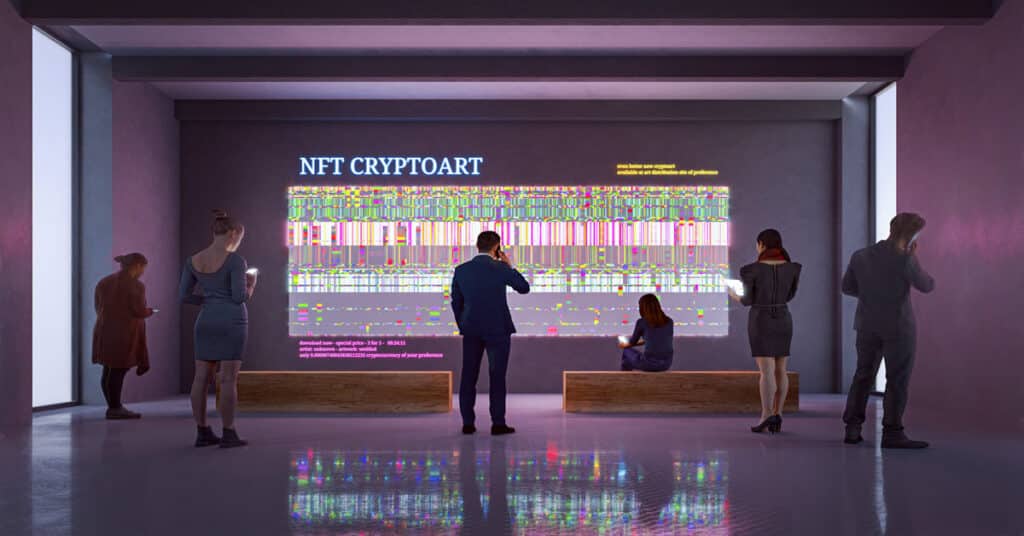
NFT art, a new source of income
Currently, there are a number of non-fungible tokens with royalties. This implies the perception of a percentage of the value of all future sales by the creative artist. The rate varies from 8 to 10% depending on the platform.
However, the value of NFT art depends on the price of cryptocurrencies, Ethereum in particular. If the value of crypto decreases, it will necessarily lead to a drop in the price of NFT, and vice versa.
What would be its global reach?
Previously, and even now, most artists sell their works only during exhibitions and auctions. This significantly limits the mobility of masterpieces and that of their creator.
With the advent of Blockchain technology on the artistic field, these sales can be made remotely, thus excluding any barriers. NFT art buying and selling platforms are taking up more and more space in the digital world.
Artists will no longer have to wait for IRL events before receiving an income from their works. Thus, we can conclude a secure future for artists around the world since NFT art exchange platforms are gaining ground over time.
Who can create an NFT?
Of course, anyone can create an NFT as long as you have all the necessary tools for this purpose.
At first glance, it is necessary to master the workings of Blockchain technology in order to guarantee the security of its crypto wallet. We have seen above that transactions in terms of digital tokens are done exclusively in cryptocurrencies, Ethereum in particular.
Also, remember that the choice of platform is crucial. Choosing one or more platforms that can lower typing and operating costs is only wise.
Then, other elements are also to be taken into account if you want to succeed in the creation of NFT. These include market size (determined by the number of users of a Blockchain), secondary markets for exchanging NFTs, additional services, and mining fees. The carbon footprint of the Blockchain should also not be ignored.
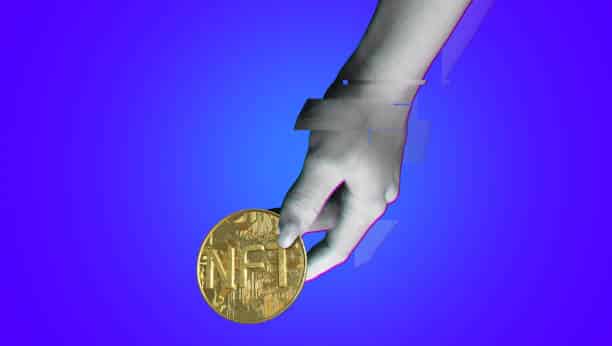
How to create an NFT for free?
Anyone can create NFT as long as all the necessary tools are there. However, it must be remembered that to be able to sell it, you have to pay a fee.
In general, the creation of NFT takes only a few minutes and this, in a more or less similar way for most platforms. And since OpenSea is at the top of our ranking, we will take it as an example of a platform to create NFT for free.
The creation of the token
The creation of non-fungible tokens begins with a click on the “create” button of Metamask. This generates a collection. Then, you must accept the terms of use by signing the confirmation of Metamask. Not to mention that the collection needs a logo, a name and a description. In fact, they must be added to finalize its creation.
Once this step is done, simply add all the items of the collection to hit. To do this, click on “Add a new item” before signing the action on your Metamask. Then add the file you want to link to the NFT.
Several formats are acceptable: jpg, png, gif, svg, mp3, mp4, webm, wav, ogg, glb, gltf. The token must have a name and the size of the file to be linked must not exceed 100 MB
Other features for your NFT
You can also add other features to the newly created token. For example, blocked content is only admissible by the owner, i.e. the buyer of the token.
Finally, it should be remembered that you need to set the number of copies you want for the token. Before you sell the NFT thus created, it must undergo a prior check where itsauthenticity is verified. If all goes well, you can sell it with peace of mind.
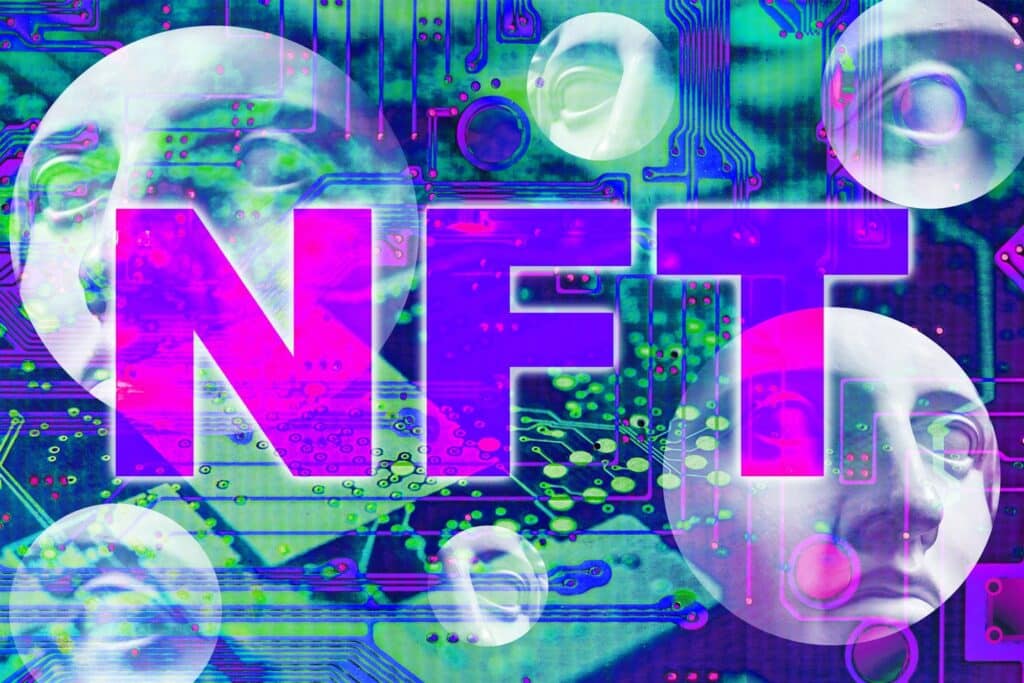
NFT: what is its impact on the environment?
It should be noted that the rise of NFTs is far from free of drawbacks. Among the main criticisms is the energy consumption to run a massive blockchain network like Ethereum’s. Indeed, compared to a large number of countries, this blockchain uses a larger amount of electricity. This is why many observers affirm the contribution of NFTs to the carbon footprint.
However, even if NFTs are no longer used, most technologies require the same amount of energy. As an example, YouTube uses the same carbon footprint as Ethereum. However, it should be noted that the latter are far from being the only ones responsible for environmental pollution. Indeed, the transport and delivery of works of art, as well as the frequency of international air traffic, are two important factors of carbon emissions. In addition, temporary infrastructure works and packaging generate tons.
In addition, some blockchains are already looking to solve this energy problem. For example, Solana uses a unique combination of proof-of-history (PoH) and proof-of-stake (PoS) mechanisms to significantly reduce energy consumption. And the Liquid Proof of Stake (LPoS) mechanism employed by Tezos uses about two million times less energy than Ethereum.
How to verify the authenticity of an NFT?
The term non-fungible determines the uniqueness of an object. And the main distinction between an NFT and a cryptocurrency is that each NFT has its own unique value. A creator can create two different NFTs for the same artwork. The value of both coins may vary.
This authenticity can be guaranteed, as each token has verifiable metadata and a transaction log. These can help prove the registration of the property. And the blockchain ensures the security of these tokens, keeping every piece of data safe and almost impossible to replicate.
The fastest and easiest way to verify the authenticity of an NFT is to examine its metadata using a blockchain explorer, such as Etherscan.io. Then you have to either find the asset on the blockchain or ask for the wallet address of the one who transmits the asset to make sure it exists and is in its possession. To do this, here’s how to do it:
- Check the NFT metadata on the blockchain explorer.
- Determine the location of the NFT hash. This indicates where the NFT is stored on the blockchain.
- In the blockchain explorer, you have to enter the NFT hash. The NFT metadata will then be displayed. Moreover, this data makes it possible to identify whether an NFT is authentic.
NFT scams explained
NFTs are still a recent phenomenon. Therefore, the market is vulnerable to scams that can take advantage of unsuspecting collectors. Here are some scams and issues related to the NFT market that need to be paid attention to.
Carpet prints
Many NTF projects have been abandoned due to “Carpet Prints” scams. The latter occurs when the creators of the project take the money invested in the project and disappear. By running away with all the money, the team leaves the collectors with a worthless asset.
wash trading
As with stocks and other collectibles, market manipulations can occur at NFT auctions. By working together, a group of potential buyers drives up the price of an NFT until an unsuspecting buyer joins them. After the sale, the value of the asset decreases, leaving the buyer with a worthless NFT.
Phishing scams
Whether through fake ads, NFT donations, or some other form of coercion, scammers sometimes ask for wallets’ private keys. Depending on the information to which he has access, the latter can then access the wallet. It can withdraw cryptocurrencies or NFTs in them or sign transactions without your consent. Since blockchain is decentralized and often anonymous, there is usually noway to recover your assets if this happens.
How to avoid NFT scams?
New scams are always taking the NFT scene by storm, which is why you should not embark on this adventure without help. The best way to avoid existing and new scams is to stay informed. For this, it is essential to find other NFT enthusiasts.
Before buying an NFT on a marketplace, one should do some research to ensure that the work purchased comes from a verified account.
In addition, it is necessary to check the history and portfolio of any interesting project. This is where blockchain transparency comes in handy. On NFT exchanges, you need to see the number of transactions and buyers for the NFT collection with EtherScan.
It should also be noted that to buy NFTs, one must register for a wallet that makes transactions on the Ethereum blockchain. As in the case of Metamask, its users have recently been the target of a phishing scam. The latter involves fake ads that ask for the private keys of users’ wallets or 12-word security phrases. For this purpose, never enter information in the pop-up window.
Also, for any cryptocurrency transaction, one should always go directly to the verified website. Never use links, pop-ups or email to enter your information.
Taxation of NFTs
For individuals, if they treat NFTs like traditional digital assets such as Ether and Bitcoin, the added value resulting from the sale of these non-fungible tokens is taxed at 30%. As a result, no tax is levied on the capital gain realized when exchanging NFTs for digital assets. On the other hand, if the NFT qualifies as intangible movable property, its capital gain is taxed at 36.2% after the implementation of a deduction related to the holding period. Finally, if the sale of the NFT has been qualified as a work of art, it is subject to the flat-rate tax of 6.5% of its price.
Taxation and the regulation of NFTs are very complex subjects, still debated and debatable. Indeed, no case law or text to date provides for the exclusion of such interpretations. Indeed, the legislator is still looking into the subject. Therefore, it is necessary to be very vigilant when declaring the possible financial gain obtained during the sale of NFTs.
What is the point of buying NFTs?
The value of buying NFTs is simply based on the technology with which they are designed. On the one hand, artists create limited editions for their artworks. For their part, consumers seem rather attracted to limited edition objects.
However, everything that is rare has more value according to the law of scarcity. Especially when the object is designed in a single copy. It goes without saying that its price is considerably high.
There are, in addition, these various objects and items sold in the form of a non-fungible token. Many are willing to spend a fortune to get them exclusively. This is the case of the very first tweet of Jack Dorsey, its founder. Indeed, “just setting up my twttr”, was sold for more than three million dollars.
Finally, fans of works of art are ready to offer a fortune against a rare, even exclusive, work of historical and monetary value. Works of art have long been sidelined, artists only win with auctions. Today, the market promises to be more than flourishing and transactions, easier than ever.
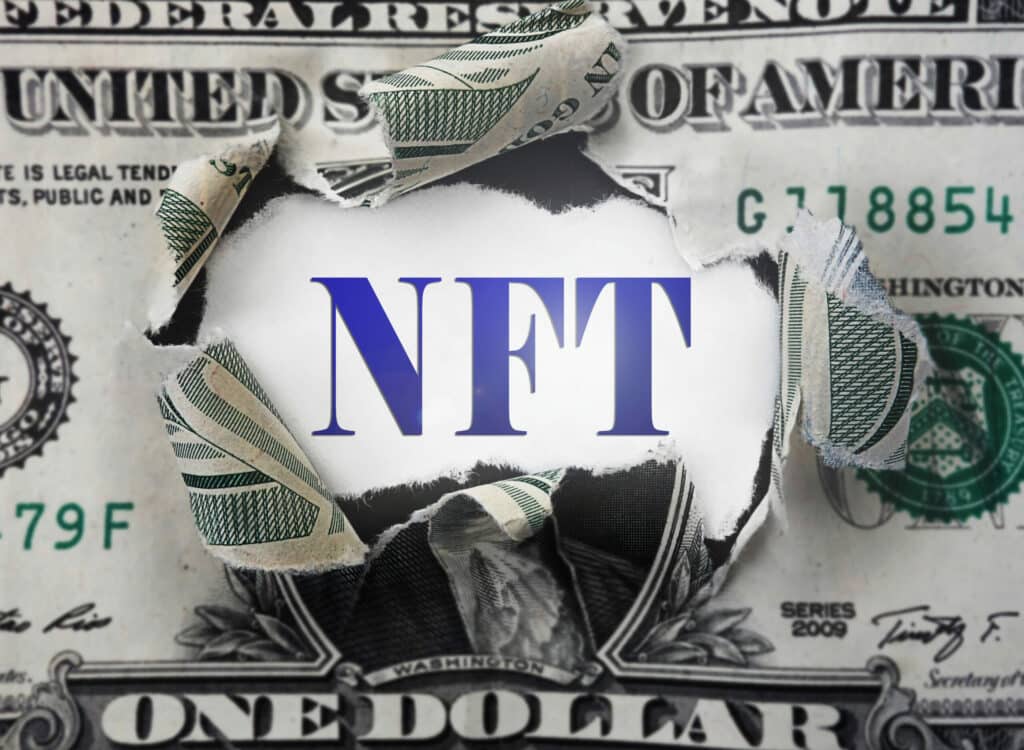
The value of an NFT
In a way, many NFTs are just a digital image. A simple right-click of the mouse saves it to your computer. Otherwise, it can be any digital object: drawing, music, AI brain, etc. Even if they reside on an Ethereum blockchain, they can be copied in part. However, the platform entry transparently indicates who created the NFT and who owns it.
This increases the value of an NFT. NBA fans have the opportunity to acquire an official NFT representing their favorite player. In this regard, some NFTs may be considered to be more valuable than others, depending on their owner.
Here is an example to illustrate what we mean: for a player, it is possible to buy an NFT linked to an online game. This NFT can be the object of a particular and unique prestige in the game. Only the owner of the NFT will be able to acquire it. If one stays in this area, the value of this NFT can quickly climb. Sometimes it can be difficult, if not impossible, to get an object of this type. Moreover, this type of cryptocurrency, no one can take it from you, not even the owners of the game.
The same is true in other areas. Being a nascent and growing field, a lot of hysteria around the subject appears. Transactions in the order of several million euros have already been carried out. Sometimes some NFTs sell for a huge sum. Or buy at a ridiculously low cost and then resell with an exponential profit.
To this end, we would also like to point out that the market faces many scams.
For example, a cryptocurrency whale can buy a lot of NFTs to sell them on its own account, another Ethereum address. This action makes it possible to artificially inflate the prices of NFTs. In this case, just because an NFT has been exchanged for a lot of money does not necessarily require a large sum to acquire it.
How do NFTs increase in value?
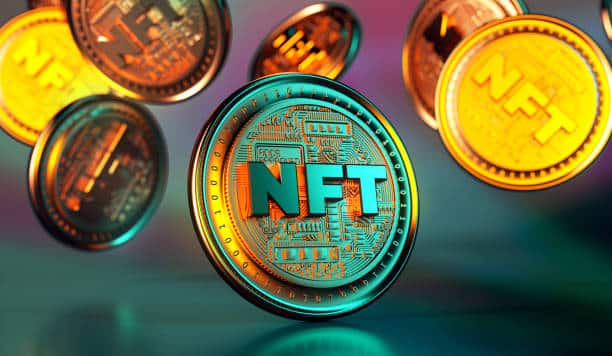
NFTs have become popular due to the skyrocketing valuations they recently updated. Beeple sold an NFT for $69 million at Christie’s while Twitter founder Jack Dorsey sold his first-ever tweet for 1,630.58 Ether. This amount was equivalent to approximately $2.9 million at the time of the sale. These staggering figures raise the question of how these NFTs are evaluated.
Like any other work of art, the NFT is evaluated according to the notoriety of the artist in the physical world, the nature of the work of art. The effort made to create the work of art, the story behind the artwork and the social currency of the artist are all taken into account.
For NFT works of art that also have a physical presence, their price varies from 1 to 10% of the physical artwork. However, it is the creators of the NFT who mainly decide on the price. According to the expert, there are no rules for determining the value, but a few factors define the cost of an NFT. The first factor concerns scarcity, i.e. the “difficult to obtain” nature of an NFT. Like any other work of art, the NFT is evaluated according to the notoriety of the artist in the physical world, the nature of the work of art. The effort made to create the work of art, the story behind the artwork and the social currency of the artist are all taken into account.
Secondly, the usefulness of an NFT, which stems from its real application, in the physical or digital world. This characteristic of NFTs gives them an immediate value, which accumulates over time depending on the popularity of the underlying project. In addition, some NFTs are related to real-world objects, which gives them value in terms of tangibility supported by the immutability of the property.
Investing in NFTs: a good or bad choice?
If the idea of buying an NFT because you like it is one thing, investing in it is another. Once again, we would like to remind you that the field is still very recent. And like bitcoins, the price of the cryptocurrency takes into account several other parameters that affect the economy. As a work of art, some time had to pass for the latter to be recognized as such.
It is therefore difficult to say whether or not investing in one or more non-fungible tokens represents a good or bad choice. Otherwise, if you plan to invest in NFTs, you’ll have to immerse yourself in a complex world, where each NFT market differs depending on the trade. In addition, the latter can be costly, due to recent network congestion. Be aware that it is quite possible to find people who would pay hundreds of thousands of euros for this type of “trading cards”. This is what makes NFTs so messy on the one hand, and interesting on the other.
What is the difference between NFTs and cryptocurrencies?
NFTs and cryptos are both built on the blockchain, using the same technology and principles. Therefore, they tend to attract the same actors. NFTs can be thought of as a subset of crypto culture. Also, one usually needs a cryptocurrency to buy and sell NFTs.
But the main difference is in their name. Cryptocurrency presents itself as a currency. Like any other currency, it has only economic value and is fungible. This means that, for the same cryptocurrency, the cryptographic token owned does not matter much. But NFTs are not fungible and have value that goes far beyond the economy.
Initially, the advantage of NFTs was to allow true ownership of digital assets that mirrors that of the “real world”. But they can do much more. NFTs allow creators to continue to collect royalties when their works are resold, which is not possible with a physical painting, for example. The NFTs undertake to eliminate intermediaries in digital publishing. They offer artists of all types the opportunity to sell directly to their admirers.
NFT markets are experiencing high volatility
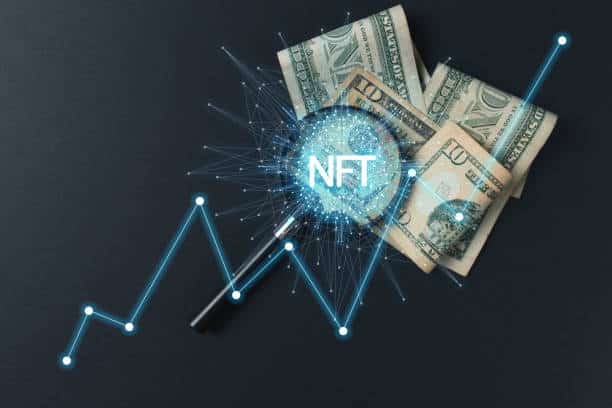
Currently, NFT markets are experiencing a high level of volatility. There is a need to educate users on these issues, and it will take time for new investors to understand them.
The first thing investors need to consider about NFTs is their volatility. Even if their value can be predicted by their usefulness, it can change radically in a short time. While investing in NFTs is not a problem for some, the risks involved must be taken into account.
This applies in particular to the long-term investments that most Internet users make when they try to make money from them. Long-term investors need to familiarize themselves with NFTs and their behavior. Ultimately, this can help them decide whether or not they want to continue investing in these products.
According to Sobec, a 19-year-old investor, it is difficult to predict the long-term value of an NFT. Indeed, it depends on the enthusiasm it arouses and the number of projects that will soon be launched in this sector. Most investors like NFTs, but that’s not enough for them to start investing in them. Sobec encourages its audience to research NFTs, and the best way to do this is to learn more. Community involvement is one of the easiest ways for new people to get involved in this market.
How to protect yourself from the volatility of the NFT market?
The market value of NFT varies over time. That’s why those who own non-fungible tokens of significant value want to protect themselves from market volatility. For this reason, they use various financial products, including options and ETH futures.
Futures contracts allow users to set in advance the price at which they will buy or sell an asset in the future. They can thus be sure that they can resell it at a certain price.
Users can therefore protect their NFT portfolio in ETH by selling futures at maturity. In general, the latter have an expiry date. This solution is therefore better suited to those who want to protect themselves against short- or medium-term risks, but not to those who want to do so in the long term.
In general, users calculate the percentage of their NFT portfolio in ETH that they want to cover. After this calculation, everyone will have an idea of the number of futures contracts needed to hedge the risks until they expire.
A similar thing can be done with the options. The latter are derivative contracts that give their holders the right without obligation to buy or sell an asset at a predetermined price. These contracts also have an expiration date, so the same reasoning applies as before. Put trades are called put options, so instead of selling futures, it is possible to buy put options.
